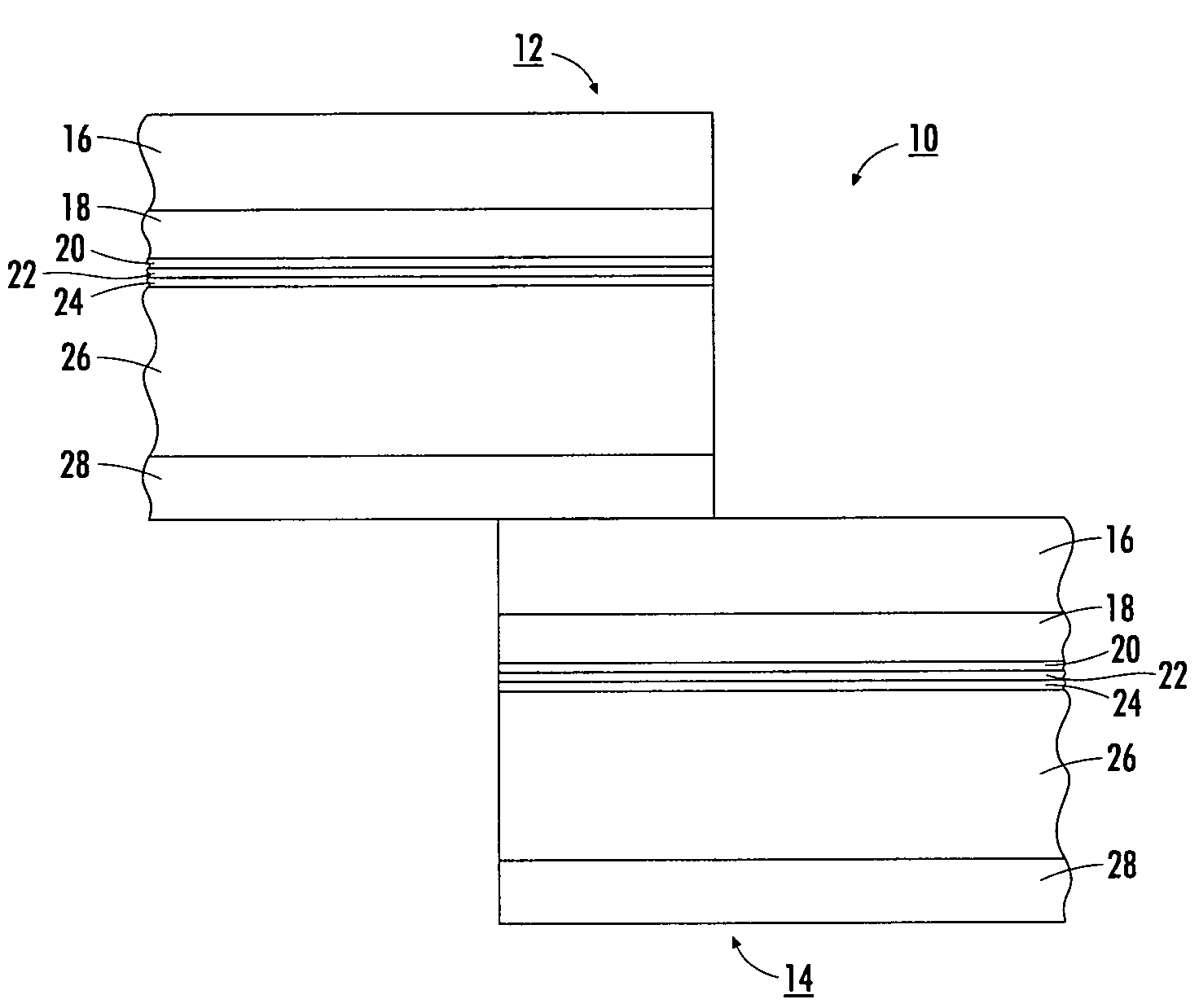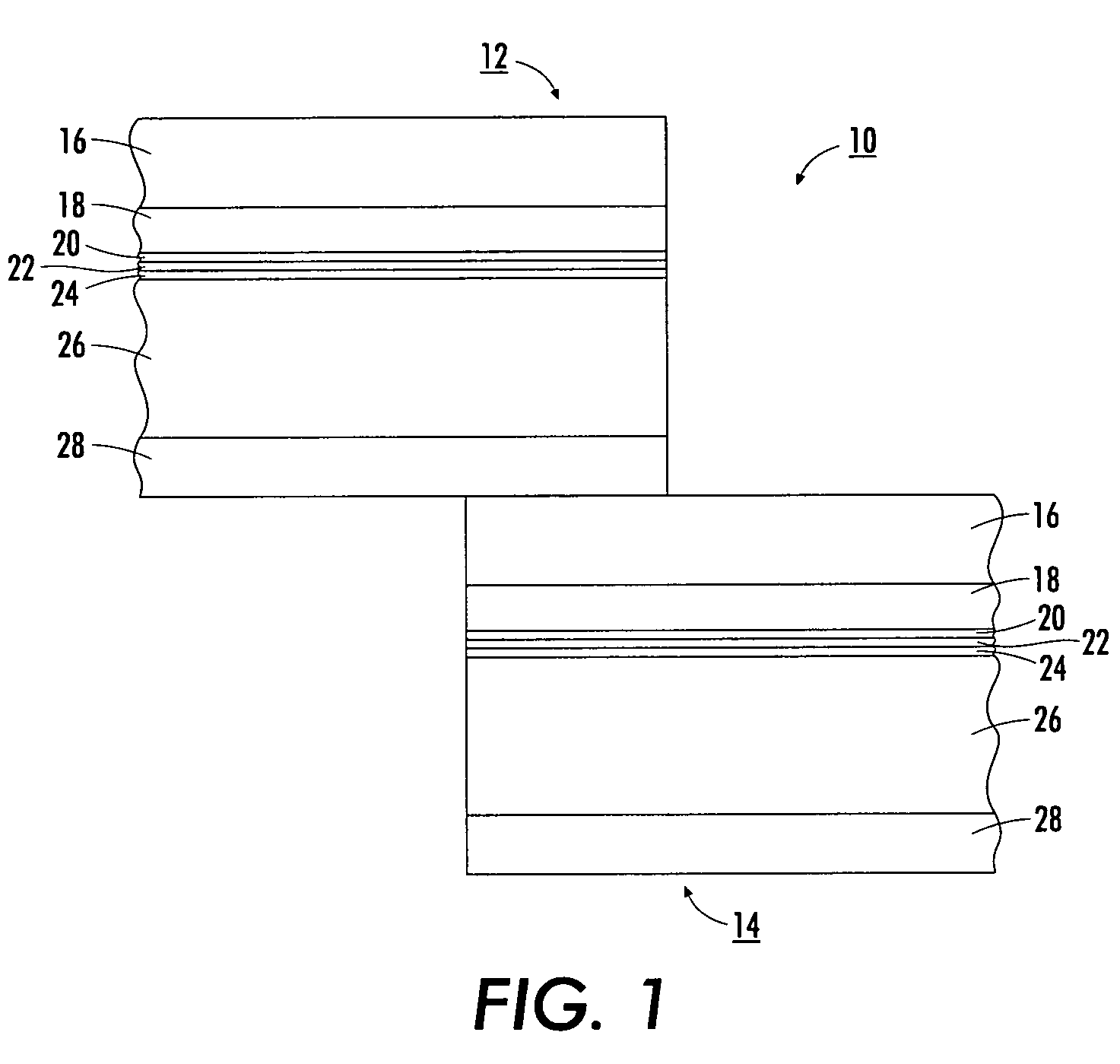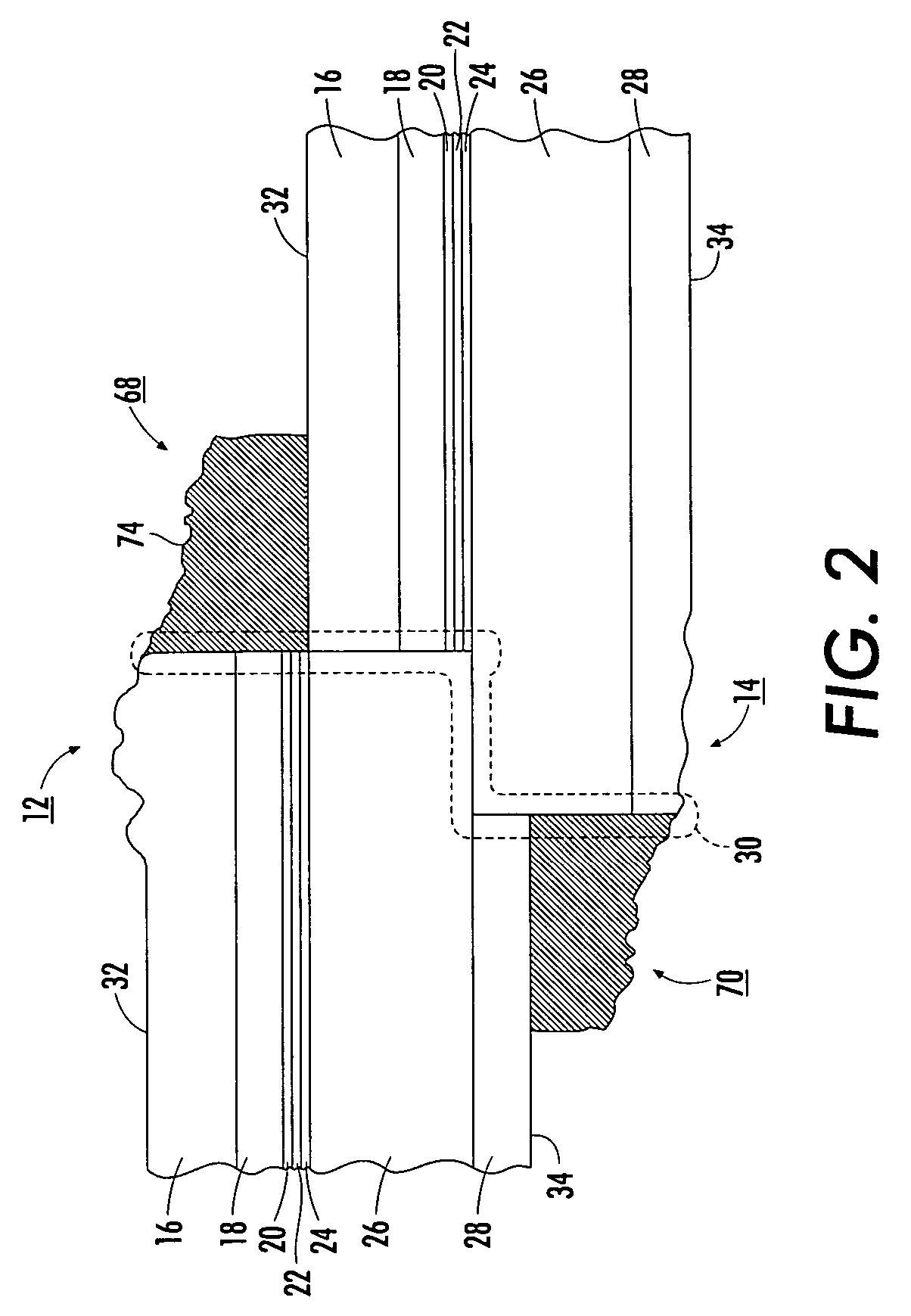Mechanical interactions against imaging member cause the charge
transport layer to develop wear, abrasion, and scratch.
Scratches manifest themselves as printout defects.
All of these physical and mechanical failures
impact copy
image quality and
cut short the intended functional life of an electrophotographic imaging member belt, requiring frequent and costly belt replacement.
This repetitive imaging member belt
cycling leads to a gradual deterioration in the physical and
mechanical integrity of the exposed outer charge transport layer leading to premature onset of fatigue charge transport layer
cracking.
The cracks developed in the charge transport layer as a result of dynamic belt fatiguing manifest themselves as copy printout defects which adversely affect
image quality.
In essence, the appearance of charge transport
cracking cuts short the imaging member belt's intended functional life.
The large
bending strain induced by each small belt support module roller aggravates the mechanical problems that lead to
early onset of charge transport layer
cracking.
Moreover, charge transport layer cracking frequently occurs at those belt segments parked over the support rollers during prolonged
machine idling or overnight / weekend shut off periods as a result of
exposure to residual
corona effluents and airborne
chemical contaminants.
The
early onset of charge transport layer cracking is a serious issue that impacts copy printout quality.
It increases the labor and material cost and also decreases daily photoreceptor production through-put by about 25%.
Moreover, the ACBC
coating application frequently results in photoreceptor production yield lost due to web stock
scratching damage caused by handling.
Consequently, this internal built-in strain compounds and exacerbates the fatigue
bending strain in the charge transport layer, causing
early onset of charge transport layer cracking.
Seam splashings are undesirable projection features because they interfere with cleaning blade action, causing blade damage and wear which leads to premature loss of cleaning efficiency.
Another
disadvantage of an ACBC is that the ACBC is in constant mechanical interaction with the machine belt support rollers and backer bars; this causes substantial wear of the ACBC.
The ACBC may also be susceptible to degradation by
ozone attack, which also accelerates wear.
ACBC wear generates dust inside the machine cavity and reduces the thickness of the anti-curl layer, diminishing its ability to keep the photoreceptor belt flat.
This upward belt
curling, caused by loss of ACBC thickness, produces significant
surface distance variation between the photoreceptor belt surface and the machine charging device; this variation causes non-uniform charging density over the photoreceptor belt surface, degrading copy printout quality.
In addition, photoreceptor belt upward
curling under dynamic belt functioning conditions causes the belt to physically interact / interfere with the xerographic subsystems, particularly in those machines employing a
hybrid scavengeless development (HSD) or
hybrid jumping development (HJD) subsystem.
This interaction leads causes undesirable artifacts which manifest themselves as printout defects.
For example, the selection of a supporting substrate having
thermal contraction matching that of the charge transport layer has been observed to be susceptible to
attack and damage by solvents used in the charge transport layer coating solution, rendering the imaging member useless.
Other substrate supports have good
thermal contraction matching properties but also have inherently low
glass transition temperatures (Tg) which are not suitable for imaging member fabrication.
Applying biaxial tensioning stress onto imaging members maintained at a temperature slightly above the
glass transition temperature (Tg) of the charge transport layer is a costly and cumbersome batch process.
 Login to View More
Login to View More 


